Cyberage has changed the way we think of libraries. However, the contemporary library architecture and design aim at keeping demand for the printed word alive. Many projects present a case study on the modern history of a library as a public resource and a place for contemplation and finding ideas. Libraries are increasingly tasked with accommodating multiple uses, of which book storage and circulation is just one.
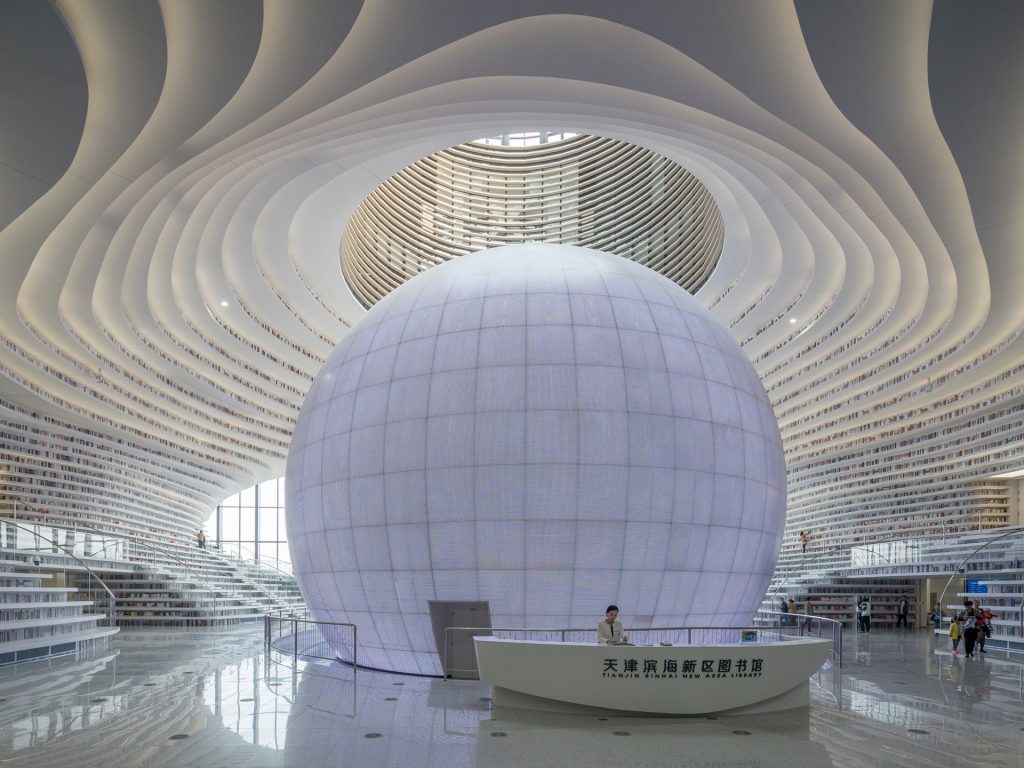
The Rotterdam-based award winning MVRDV Architectures together with Tianjin Urban Planning and Design Institute (TUPDI) have completed Tianjin Binhai Library. The project is a part of a larger masterplan for a whole new cultural district of the city. The 33,700m2 structure took only three years to complete; it features a luminous spherical auditorium (the Eye) and floor-to-ceiling terraced bookcases that echo the form of the sphere and create a topographical landscape, the contours of which reach out and wrap around the façade.
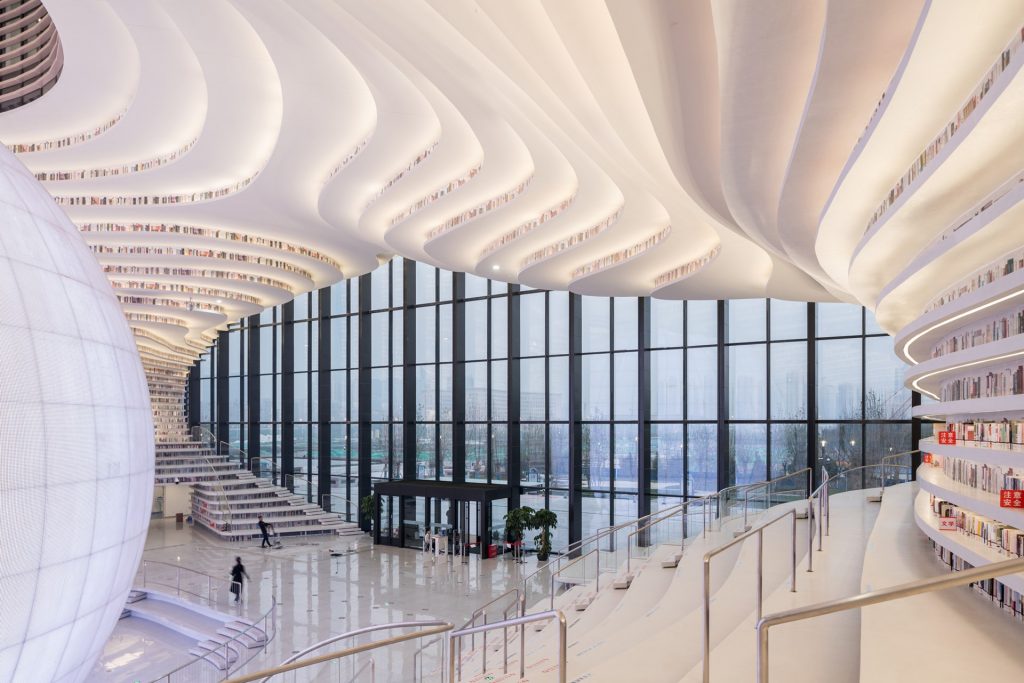
Terraced bookcases of the Tianjin Binhai Library
The five-level building features a book storage, an auditorium, a large archive and subterranean service spaces. It offers reading areas for children and the elderly on the ground floor, further reading rooms on the upper floors, as well as lounge areas, meeting rooms, offices, computer and audio rooms and two rooftop patios.
The library now functions as a junction point for the city’s Central Business District, its old town, residential districts, commercial areas and government quarters.
The Netherlands based KAAN Architecten have designed Utopia, the Library and Academy for Performing Arts in Aalst. The 8.000 square-meter brick structure incorporates the building of the former military school and generous spaces where the brickwork meets the light gray concrete elements.
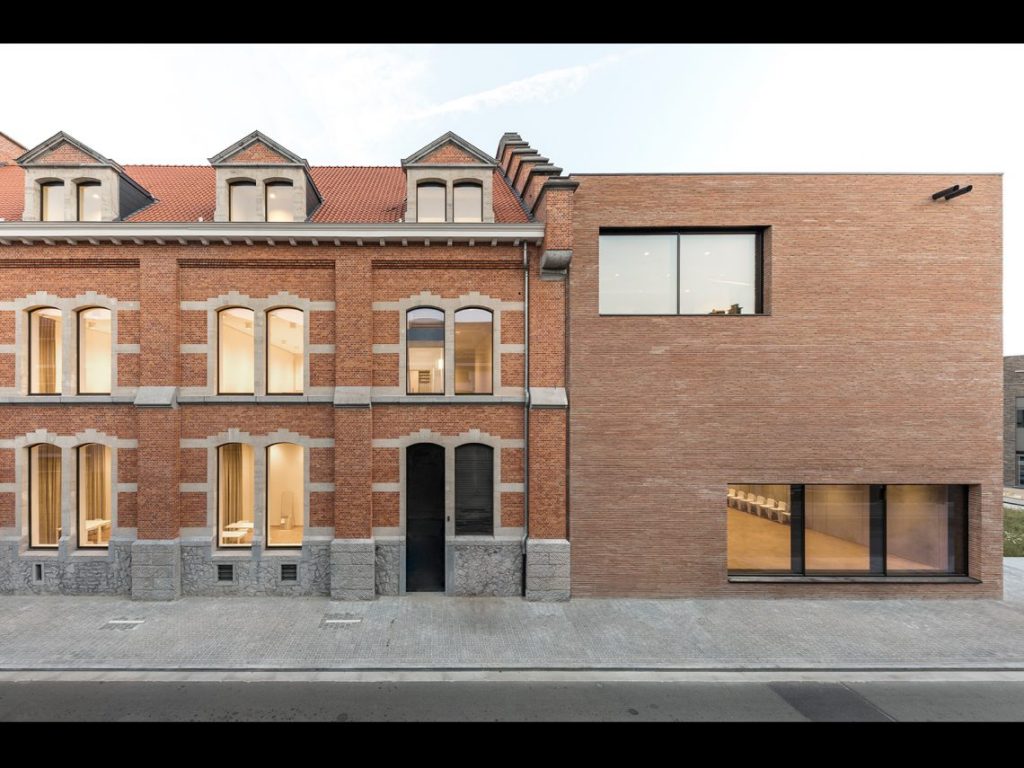
Utopia by KAAN Architecten
Entering the building from an intimate square between the reading café and the auditorium, you step into a wide hall to perceive the open interior landscape of the building. It unfolds from floor to ceiling and features several thick concrete floors that appear to float. Bookshelves and reading tables are placed on different levels; a 11.5 m high bookcase stretches upwards filled with books donated by each Aalst resident. The concrete structures seem to be supported by books. The Academy for Performing Arts is housed on the first two floors and has a ballet room, rehearsal studios and teaching spaces, which all have windows as tall and wide as the rooms themselves.
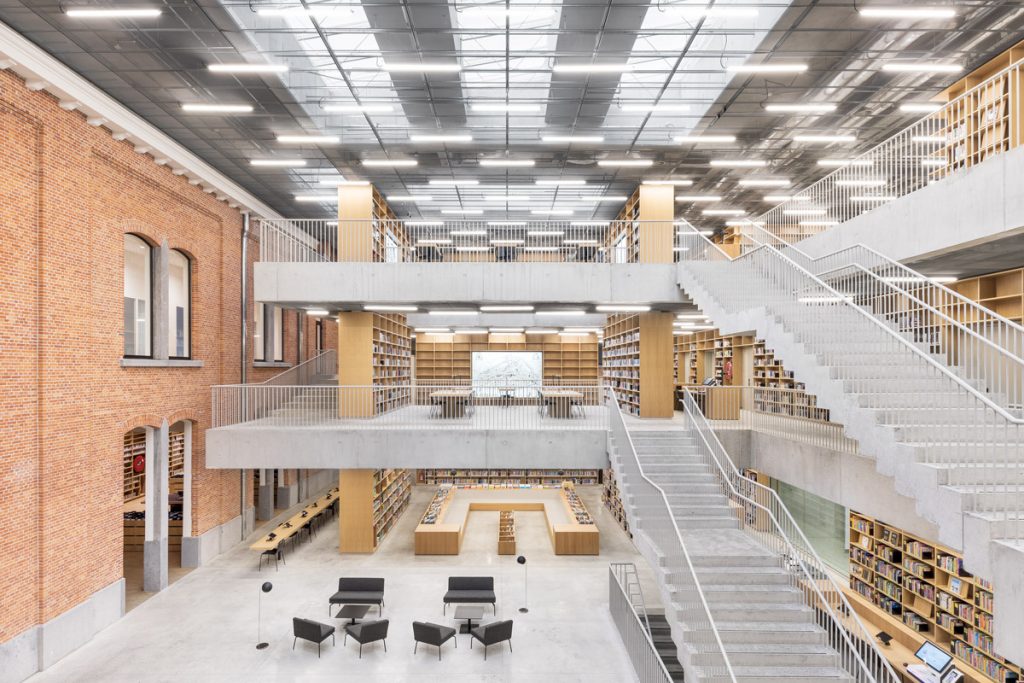
The floating concrete floors, Utopia
The building is all about sustainability: materials and labor were sourced locally, low-energy machines were used for construction, while solar panels, geothermal heat and LED lighting have been integrated into the design. Moreover, rainwater is recuperated and buffered, and 230.000 bricks were chipped away and reused elsewhere.
The House of Wisdom in Sharjah was designed by the British Foster + Partners; and is scheduled to open in 2020.
Located on Sharjah International Airport Road, the two-storey building embodies clarity and lightness. Its large floating roof cantilevers on all sides of a transparent rectilinear volume. The façades are shaded throughout most of the day by a 15-metre-wide overhang, while aluminium screens with differing densities filter the low sun in the evenings thus preserving visual connections with landscaped gardens.
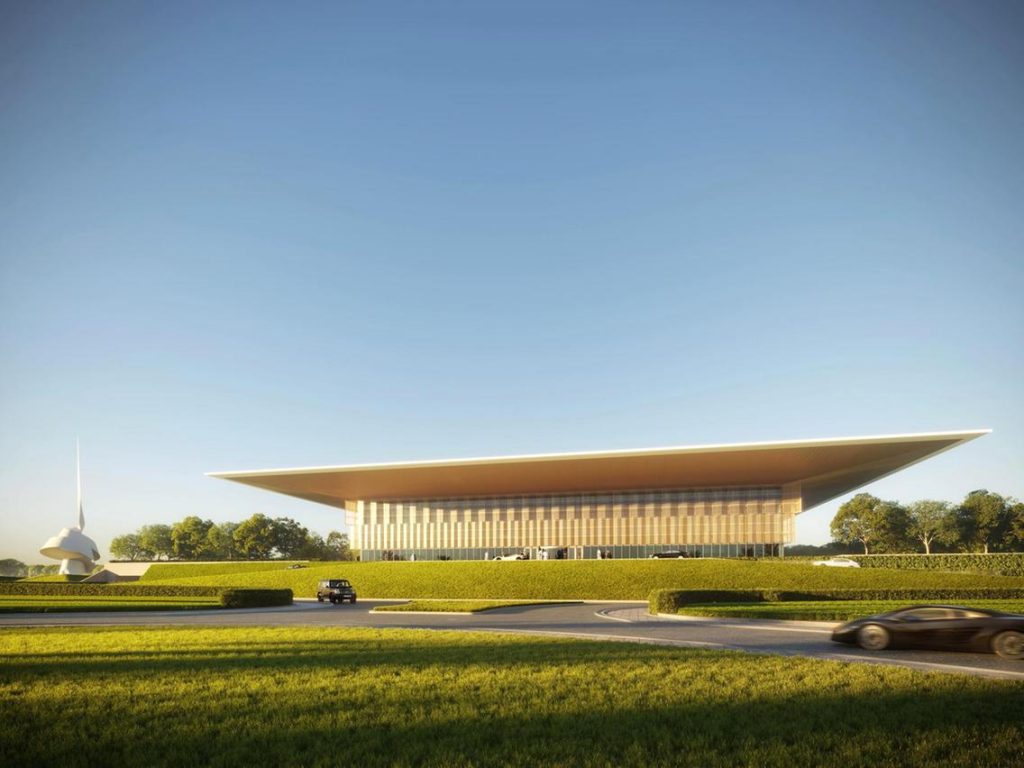
The House of Wisdom by Foster + Partners
The library contains large spaces for exhibitions, a café alongside a children’s educational space, an archive, collaborative spaces, reading lounges, a prayer room and a women-only area.
The building will sit in a landscape divided into two sections – a knowledge garden with a children’s playground to the south and a more formal, geometrically arranged garden to the north containing the Scroll by British sculptor Gerry Judah – a contemporary interpretation of ancient Arabic scrolls.
Gerard Evenden, Head of Studio, says that the building will give the local communities and scholars a new space for shared learning and innovative research, set within a beautiful landscape.